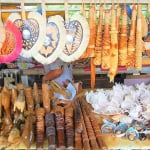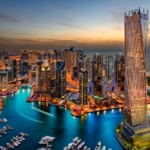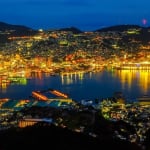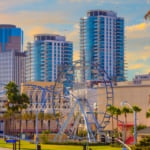Name: Yubari Tourism Information Center
Address: 1-1-4 Suehiro, Yubari City, Hokkaido
Official & Related Website URL: http://u0u0.net/NYe1
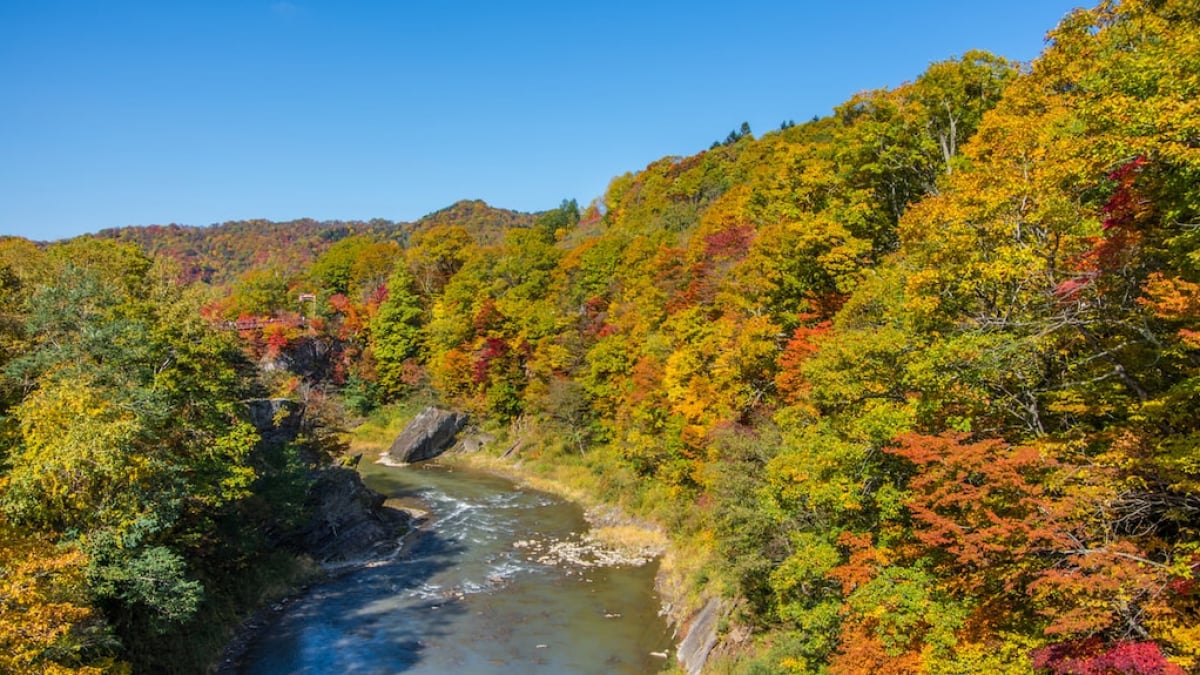
It’s a waste not to know! 20 Recommended Tourist Spots in Yubari
Once a thriving coal mining town, Yubari in Hokkaido had a population of around 120,000 at its peak. However, due to the closure of coal mines caused by changes in the energy structure, the town’s population has now decreased to under 10,000. Despite this, Yubari actually has many tourist attractions. In addition to the famous Yubari melon, there are remnants of coal mines, natural spots, and filming locations from numerous movies. Furthermore, the town is just an hour away from Sapporo by highway, making it easily accessible. It would be such a waste not to visit Yubari! In this article, we’ll introduce 20 recommended tourist spots you must visit when you come to Yubari.
table of contents
[x] close
It’s a waste not to know! 20 Recommended Tourist Spots in Yubari
- 1. Yubari Tourism Information Center
- 2. Michinoeki Yubari Melroad
- 3. Yubari City Agricultural Cooperative Meisan Center
- 4. Hokkaido Bussan Center Yubari Store
- 5. Yubari City Coal Mine Museum
- 6. Kittan Shimizusawa Thermal Power Plant Ruins
- 7. Kittan Shimizusawa Coal Mine
- 8. Kittan Chemical Industrial Coke Oven Chimney
- 9. Takinoue Power Station
- 10. Yubari Kinema Kaido (Yubari Cinema Street)
- 11. Kōfuku no Kiiroi Hankachi Omoide Hiroba (Happiness's Yellow Handkerchief Memory Square)
- 12. Yubari Melon Dome
- 13. Mount Racey
- 14. Shuparo Lake
- 15. Takinoue Park
- 16. Mitsubishi O-Yubari Railway Minami-O-Yubari Station Ruins
- 17. Yubari Shrine
- 18. Ogura-ya Panjū Store
- 19. Racey no Yu (Racey Hot Spring)
- 20. Yubari-dake (Yubari Mountain)
- ◎ Summary
1. Yubari Tourism Information Center
The "Yubari Tourism Information Center" is located inside the waiting area of JR Yubari Station. Unfortunately, the station was closed on April 1, 2019, due to the discontinuation of the Yubari branch line, but it is still a popular spot for many railway enthusiasts. Since this is the only tourism information center in the city, it might be a good idea to visit at least once. The center provides information about Yubari City’s events, tourist facilities, souvenirs, and accommodation.
2. Michinoeki Yubari Melroad
If you want to try delicious local food in Yubari, "Michinoeki Yubari Melroad" is highly recommended. The station offers fresh local vegetables and fruits, as well as products made by people with disabilities, such as vegetables, bread, and various small items, all at affordable prices. Among these, the handmade bread is so popular that it often sells out quickly.
Of course, there are also products related to the famous Yubari melon. Original goods featuring the local characters "Yumeron-kun" and "Melorina-chan" make perfect souvenirs. You can also find "Tandora" (a dorayaki inspired by coal) and the popular "Yubari Melon Bread," all made by the long-established confectionery company "Abe Kashiho."
Name: Michinoeki Yubari Melroad
Address: 526-19 Kōyōzan, Yubari City, Hokkaido
Official & Related Website URL: http://www.hokkaido-michinoeki.jp/michinoeki/3083/
3. Yubari City Agricultural Cooperative Meisan Center
The "Yubari City Agricultural Cooperative Meisan Center" is operated by the Yubari Agricultural Cooperative, which produces Japan’s finest melons. The center offers a variety of Yubari melon products, including sherbet, jelly, and brandy. The restaurant serves delicious dishes made with locally sourced vegetables. Located along National Route 274, which connects Sapporo and Eastern Hokkaido, it is just a 3-minute walk from JR Takinoe Station, making it very accessible.
Name: Yubari City Agricultural Cooperative Meisan Center
Address: 132 Takinoe, Yubari City, Hokkaido
Official & Related Website URL: https://www.city.yubari.lg.jp/kanko/taberukau/meisan.html
4. Hokkaido Bussan Center Yubari Store
When it comes to the "Hokkaido Bussan Center Yubari Store," the famous local character "Melon Kuma" comes to mind. The store offers a wide variety of Melon Kuma merchandise, including pens, notebooks, handkerchiefs, piggy banks, wallets, and more. Some exclusive items can only be purchased here. If you ask the Melon Kuma specialist "Nacchan," they can recommend the best products for you.
Name: Hokkaido Bussan Center Yubari Store
Address: 33 Kaede, Yubari City, Hokkaido
Official & Related Website URL: https://www.city.yubari.lg.jp/kanko/taberukau/bussancenter.html
5. Yubari City Coal Mine Museum
Coal was once called the "black diamond" and was a vital energy source, not only in Japan but around the world. Yubari, once thriving as a coal mining town, began to decline as energy sources shifted to oil, causing many coal mines to close.
You can learn about Yubari's history at the "Coal Mine Museum," one of Japan's largest coal museums. The museum displays the process of coal production, mining machinery, and the conditions of coal miners through photographs. A key feature of the museum is the mine tunnel exhibit, which is a must-see.
Inside a simulated mine tunnel, which was once used for rescue team training and coal miner workshops, visitors can experience exploring the pitch-dark tunnels with only a cap lamp. This unique experience makes you feel like an explorer. Don't miss the mining equipment, which operates with loud, powerful sounds.
Name: Yubari City Coal Mine Museum
Address: 7-1 Takamatsu, Yubari City, Hokkaido
Official & Related Website URL: https://coal-yubari.jp/
6. Kittan Shimizusawa Thermal Power Plant Ruins
During its peak, Yubari had 20 coal mines, and the "Kittan Shimizusawa Thermal Power Plant" was built to generate electricity. Today, it is used as a recycling facility, but about a quarter of the original site has been preserved and is open for tours.
The site features gray concrete walls with holes, broken windows, rusted exposed steel bars, and crumbling staircases, creating a scene straight out of a science fiction movie. It has become a popular photo spot, especially among young people, and is often discussed on social media. For more information, check the website for details on tours.
Name: Kittan Shimizusawa Thermal Power Plant Ruins
Address: Shimizusawa Seiei-cho, Yubari City, Hokkaido
Official & Related Website URL: https://www.shimizusawa.com/sapp
7. Kittan Shimizusawa Coal Mine
The "Kittan Shimizusawa Coal Mine" was one of the coal mines in Yubari, but after its closure about 30 years ago, there is little to see today. Since it was a relatively small-scale mine, it is easy to understand the structure of coal mining, making it an ideal place to explore the workings of an actual coal mine. The office, sealed mine entrance, and slag heap remain in their original state. It takes about 10 minutes to walk from the base of the slag heap to the top. Be sure to climb up and enjoy the panoramic view.
Name: Kittan Shimizusawa Coal Mine
Address: Shimizusawa Seiei-cho, Yubari City, Hokkaido
Official & Related Website URL: http://www.shimizusawa.com/tankou
8. Kittan Chemical Industrial Coke Oven Chimney
Yubari has many closed coal mines, which means there are unique landscapes that you won't find in other tourist spots. The "Kittan Chemical Industrial Coke Oven Chimney" is one such place. This massive chimney was built for the coke production at "Kittan Chemical Industrial," which was involved in manufacturing deodorizing equipment.
The chimney stands at about 63 meters tall. Since there are no tall buildings nearby, its height is particularly striking. The reason for the height of the chimney was to protect the health of the local residents by dispersing the smoke. Its preserved form serves as a symbol of Yubari, reflecting the passage of time and the impermanence of things.
Name: Kittan Chemical Industrial Coke Oven Chimney
Address: Hiyoshi, Yubari City, Hokkaido
9. Takinoue Power Station
The "Takinoue Power Station" was built by Hokkaido Tanko Kisen Co., Ltd., which operated the coal mining business in Yubari, as a hydroelectric power plant for self-generation. Even after more than 90 years since its construction, it is still in operation today, which is quite remarkable. The brick building with a star-shaped symbol in the center is loved by tourists as a hidden gem of Yubari. The combination with autumn foliage is particularly spectacular.
Name: Takinoue Power Station
Address: 5 Takinoe, Yubari City, Hokkaido
Official & Related Website URL: http://www.pref.hokkaido.lg.jp/kg/htd/ps-gaiyou/takinoue.htm
10. Yubari Kinema Kaido (Yubari Cinema Street)
When you visit Yubari, you'll come across an area filled with many movie posters. This area is called "Yubari Kinema Kaido." Under the slogan "From Coal Mining to Tourism," this initiative aims to revitalize Yubari through films. Many famous movies are featured, making it a must-visit spot for movie lovers.
Name: Yubari Kinema Kaido
Address: Honmachi, Yubari City, Hokkaido
Official & Related Website URL: http://jm-hokkaido.sakura.ne.jp/roadsideyubari01.html
11. Kōfuku no Kiiroi Hankachi Omoide Hiroba (Happiness's Yellow Handkerchief Memory Square)
Are you familiar with the movie Happiness's Yellow Handkerchief? The filming location of the famous last scene of this movie has been preserved in its original form at "Kōfuku no Kiiroi Hankachi Omoide Hiroba." This row house community, where coal miners and their families once lived, still retains the atmosphere from that time.
In one of the houses, you’ll find the red Familia car that became a star in the movie, recreating one of the iconic scenes from Happiness’s Yellow Handkerchief. Movie fans will love this. If you haven't watched the film yet, I recommend watching it before visiting Yubari.
Name: Kōfuku no Kiiroi Hankachi Omoide Hiroba
Address: 5 Hiyoshi, Yubari City, Hokkaido
Official & Related Website URL: https://yubari-hankachi.com/
12. Yubari Melon Dome
The "Yubari Melon Dome" is characterized by its cute appearance with a round melon on top of the roof. During the Yubari melon season, fresh melons fill the shop. The cut melons are priced more reasonably compared to other stores, so if you want to indulge in Yubari melons, this is the place to go.
In addition to melon jelly and sherbet, the melon soft cream is also a big hit. The rich soft serve ice cream combined with the flavor of melon creates an indescribable deliciousness that fills your mouth. During the tourist season, this spot becomes bustling with tourists and school trips, making it one of Yubari's top attractions.
Name: Yubari Melon Dome
Address: 213-27 Numanosawa, Yubari City, Hokkaido
Official & Related Website URL: https://www.city.yubari.lg.jp/kanko/taberukau/melondome.html
13. Mount Racey
Located in the center of Yubari City, "Mount Racey" is a ski resort known for its excellent snow quality. It offers nearly 20 courses ranging from beginner to advanced levels, along with dining areas and rest zones, making it a popular ski resort for families and couples.
The resort also provides high-quality rental skis from top brands, so you can visit without bringing your own equipment. Guests staying at "Hotel Mount Racey" or "Yubari Hotel Shupalo" can enjoy a free shuttle service from Shin-Yubari Station. For more details, be sure to check with the Yubari Resort General Reservation Center.
Name: Mount Racey
Address: 2-4 Suehiro, Yubari City, Hokkaido
Official & Related Website URL: http://www.yubari-resort.com/
14. Shuparo Lake
"Shuparo Lake" is an artificial lake located about 10 km east of Yubari City center. It was created by the O-Yubari Dam, completed in 1962, and expanded by the Yubari Shuparo Dam, completed in 2015. It is the second-largest artificial lake in Hokkaido.
Surrounded by primeval forests, Shuparo Lake has no light sources, making the night sky particularly beautiful. In summer, you can enjoy the view of the beautiful lake surface reflecting the blue sky, and in winter, it transforms into a magical snow-covered landscape. Shuparo Lake also offers activities to experience nature, such as canoeing and rafting.
Name: Shuparo Lake
Address: Kashima Akashicho, Yubari City, Hokkaido
Official & Related Website URL: https://www.city.yubari.lg.jp/kanko/miruasobutaiken/syuparoko.html
15. Takinoue Park
As you drive down National Route 274 toward the Yubari River, you'll come across the rushing Yubari River and the riverbanks surrounding it. "Takinoue Park" is famous for its beautiful autumn foliage, attracting many tourists from both inside and outside Yubari City when the leaves are at their peak in the fall. The various patterns seen on the riverbank are the result of layers formed over long periods and geological movements. These patterns evoke the dynamic vitality of the Earth.
Name: Takinoue Park
Address: 5 Takinoe, Yubari City, Hokkaido
Official & Related Website URL: https://www.city.yubari.lg.jp/kanko/miruasobutaiken/takinouekouen.html
16. Mitsubishi O-Yubari Railway Minami-O-Yubari Station Ruins
The "Mitsubishi O-Yubari Railway" was a railway used during the time Yubari thrived as a coal mining town, transporting coal from the mines and serving as a means of transportation for local residents. However, with the shift in energy sources from coal to oil, and due to the closure of coal mines and rationalization, the railway was abandoned in 1987.
At the Minami-O-Yubari Station ruins, six carriages, including passenger cars and freight cars, are preserved in their original condition. Inside the passenger cars, there are many exhibits, including photos showing the restoration of the vehicles. You can also see a snowplow vehicle used for clearing snow.
Although the outdoor vehicles appear to be deteriorating, they are being beautifully preserved thanks to the efforts of the preservation society. These vehicles have been recognized as "industrial heritage" by the Ministry of Economy, Trade, and Industry. This location, including the station ruins, is a must-see spot for railway enthusiasts.
Name: Mitsubishi O-Yubari Railway Minami-O-Yubari Station Ruins
Address: Minami District, Yubari City, Former Minami-O-Yubari Station Site
Official & Related Website URL: http://www.ooyubari-rps.net/
17. Yubari Shrine
The "Yubari Shrine" was established during the Meiji era, when coal mining in Yubari was becoming more prominent. It was built to pray for the safety of the coal mines and the construction of railways. Inside the shrine is a dedication from Admiral Tōgō Heihachirō, who was revered as a "war god" after Japan's victory in the Battle of Tsushima during the Russo-Japanese War. He dedicated a wooden plaque as a token of gratitude for the coal supplied from the Yubari coal mines, which powered the warships of the Japanese Navy.
Name: Yubari Shrine
Address: 7 Sumizatsu, Yubari City, Hokkaido
Official & Related Website URL: http://www.hokkaidojinjacho.jp/data/05/05001.html
18. Ogura-ya Panjū Store
At the "Ogura-ya Panjū Store," you can purchase Yubari's famous panjū (sweet-filled bun). This panjū is a snack made by filling batter, similar to takoyaki dough, with sweet red bean paste and grilling it. The outside is crispy, while the inside is soft and sweet, making it incredibly delicious. It is such a popular item that people even come from Honshu to buy it. If you're visiting Yubari, be sure to try it!
Name: Ogura-ya Panjū Store
Address: 10 Wakana, Yubari City, Hokkaido
19. Racey no Yu (Racey Hot Spring)
"Racey no Yu" is a hot spring located in the "Hotel Mount Racey," which is adjacent to the Mount Racey ski resort. The spring's water contains sodium and bicarbonate, and it shares the same mineral composition as the well-known moor springs found in Hokkaido's Tokachi region, which have also been recognized as Hokkaido heritage.
With its glass-walled indoor bath offering a sense of openness, a roofed outdoor bath that can be enjoyed regardless of the weather, and a mist sauna, it's an ideal spot to relax and heal your body after a day of skiing or sightseeing in Yubari. There's also a "hands-free set" with a rental towel, so you can visit without bringing your own.
Name: Racey no Yu
Address: 2-4 Suehiro, Yubari City, Hokkaido
Official & Related Website URL: https://www.city.yubari.lg.jp/kanko/tomaruonsen/raceynoyu.html
20. Yubari-dake (Yubari Mountain)
"Yubari-dake" is a mountain known for being part of the "One Hundred Famous Mountains of Japan" and the "Two Hundred Famous Mountains of Japan." Located in the southern part of the Yubari Mountain Range, it is also the source of the Yubari River. Standing at an elevation of 1,668 meters, the mountain is home to many alpine plants, making it an especially recommended tourist spot for flower and plant lovers.
During the hiking season from July to October, you'll witness blooming flowers amidst the remnants of snow and fresh greenery in early summer. The peak of the season is in August when the area becomes bustling with tourists. For those who want to enjoy a more peaceful hiking experience, autumn is ideal. In particular, if you hike around late September, you can enjoy the beautiful autumn foliage of Yubari. However, be aware that the opening dates of the forest road gates vary by season.
Name: Yubari-dake
Address: Kanayama, Minami-Furano Town, Sorachi District, Hokkaido
Official & Related Website URL: https://www.city.yubari.lg.jp/shisetsuannai/bunkakyoiku/yubaridake/index.html
◎ Summary
Yubari City, which has faced many challenges such as the closure of mines, economic collapse, and population decline, is once again drawing attention as a tourist destination thanks to its diverse attractions and delicious agricultural products. Through Yubari tourism, you can feel the resilience of the city that turns "negatives into positives" and the deep affection of its citizens for their town. Contributing to the revitalization of Yubari through tourism may be a great way to help the city thrive again.
RELATED ARTICLES
REGIONS
CATEGORIES
FEATURED ON Japan
-
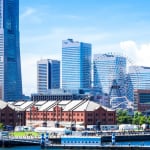
What is Yokohama Sea Bass?|Introducing Fares and Sightseeing Routes!
-
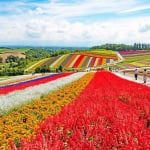
Where will you go for the summer vacation? Introducing recommended spots for domestic travel
-
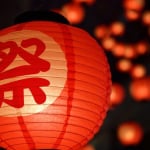
4 Selected Festivals in the Nakano Area! Let’s Go to the Hikawa Shrine Grand Festival!
-

A little different!? 3 Recommended Souvenirs from Ōwani Town, Aomori Prefecture Featuring Addictive Bean Sprouts!
-
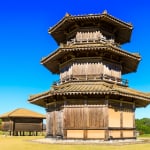
Reviving the Ancient Mountain Castle! Introducing the Kikuchi Castle Ruins, a Tourist Spot in Kikuchi City, Kumamoto Prefecture
MOST POPULAR ON Japan
-
 1
1Doha: Must-see Attractions in the Capital of Qatar
-
 2
2Toronto: 10 Things to do in this Picturesque Canadian City
-
 3
3Amarillo: A City Famous for It’s Amazing Canyons, Great History and Music
-
 4
4South Korea: Dazzling Scenery, Rich Culture and Fascinating History
-
 5
5Kuwait: A Country in Middle East Asia Famous for Hot Sand Dunes and Stunning Cityscape

